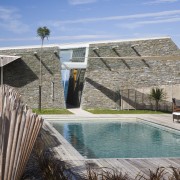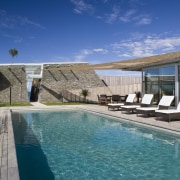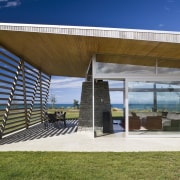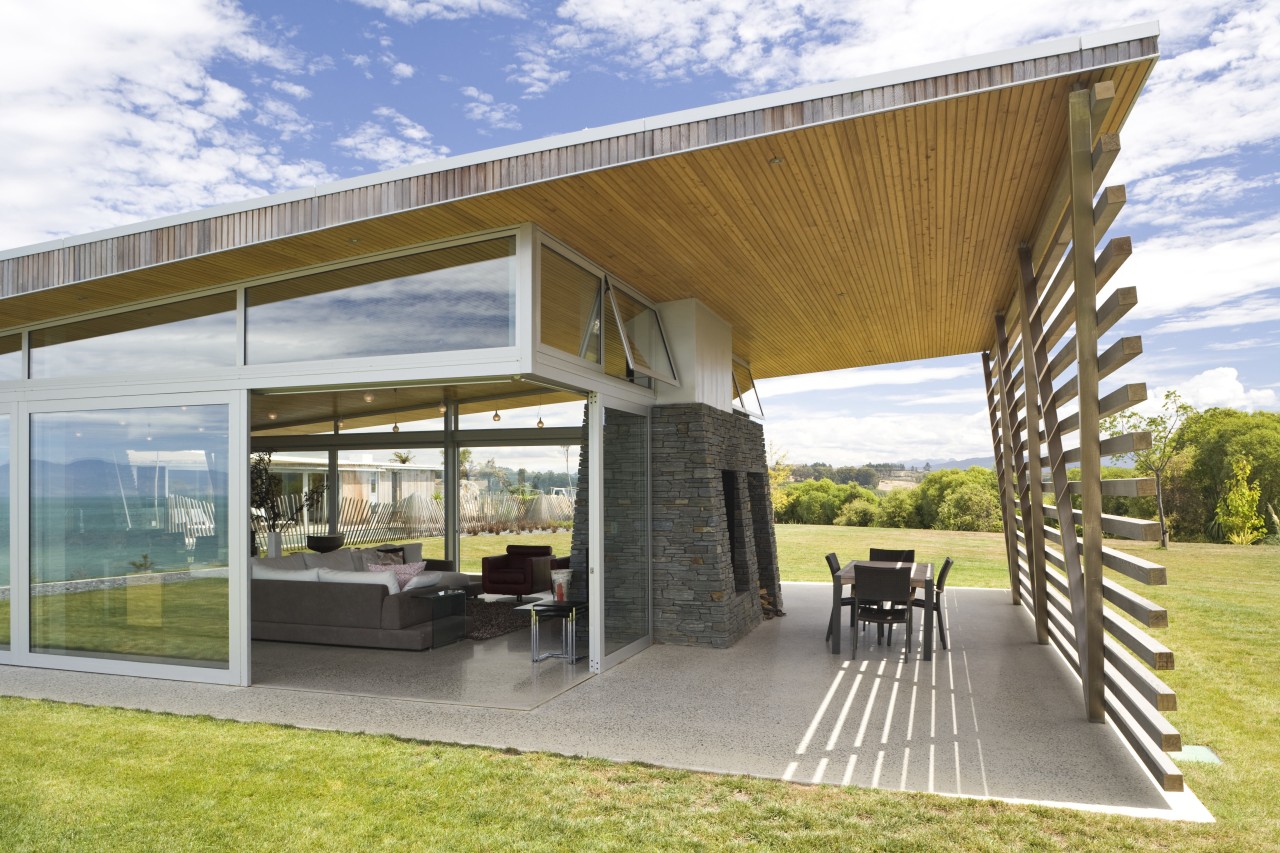A simple disguise
Extensive glazing, stone and weathered cedar cladding ensure this home blends into its surroundings, making it almost invisible from a distance
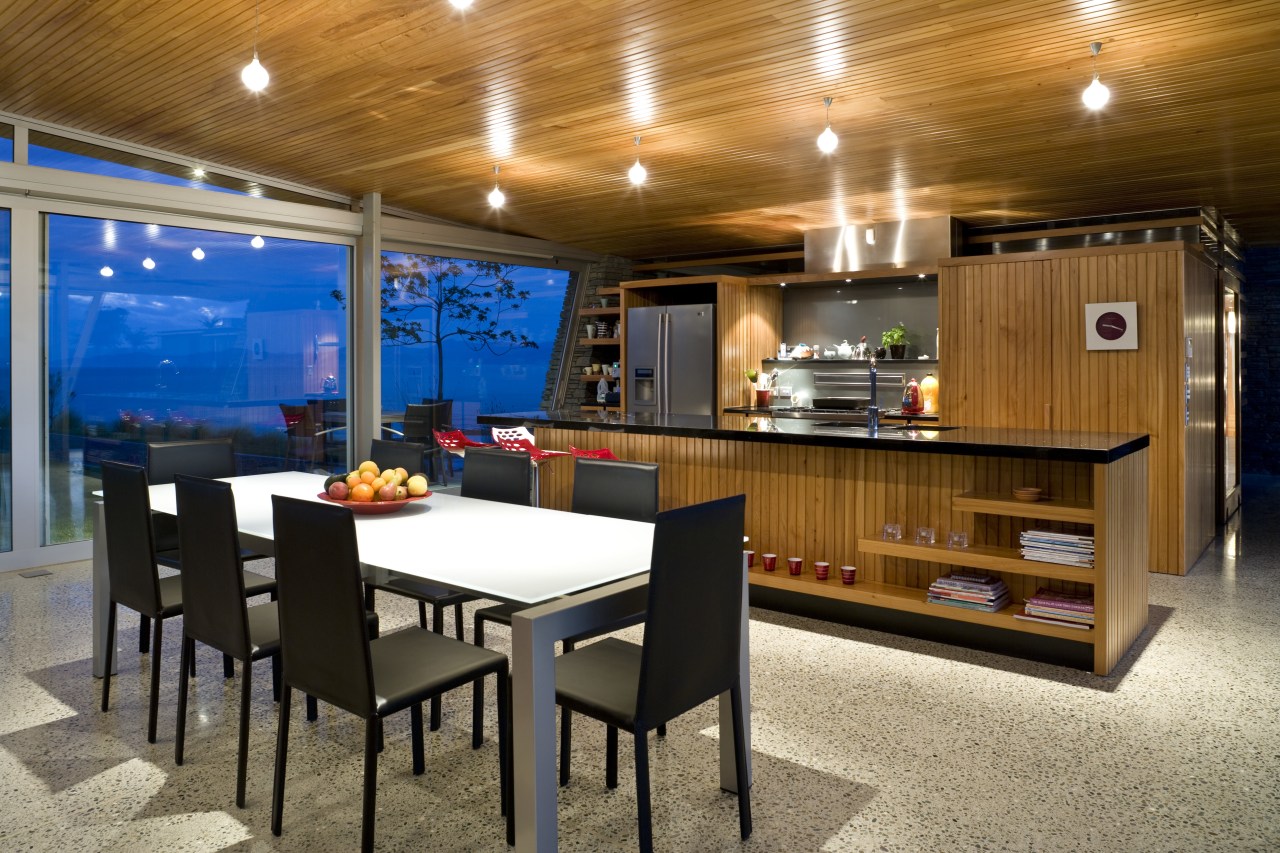
Architecture driven by the specific conditions of the site is a popular design approach for retirement and holiday homes along unspoilt coastal areas. When constructing in such zones, designers have to consider whether these new homes should stand proud or blend unobtrusively into the natural surroundings.
When commissioned to design a large home for an elevated site near the end of Kina Peninsula in Nelson, designer Steve Seddon says it was clear that the most sensitive solution burying the house was not practical.
Not only would much of the 360° view of water and hills have been sacrificed, but the solar gain and ventilation potential would also have been compromised.
Instead, Seddon designed a house that utilises natural materials and textures, and combines them in a sensitive manner. The primary concept was to design a house that looked like it extended from a geological formation.
The building comprises four separate sections: the central schist-covered entrance that depicts the geological formation; an extensively glazed living space on the north side; a darker, cedar-clad bedroom wing to the south; and a separate pool house to the west.
On entering the home, the double-height stairwell with schist-lined interior and exterior walls creates the dramatic effect of stepping inside a rocky cavern.
"Coming into the house through the dark, ravine-like staircase and hall serves to heighten a visitor's experience of the house and create a sense of anticipation," says Seddon.
Once inside the central core, a transverse accessway cuts across the width of the house and presents the first connection to the exterior.
This cavern-like area links the bedroom and living wings and becomes the dense centrepiece of the house. The raked stone walls create the sense of a large rock sundered in two by some ancient geological force.
As well as delineating the interior spaces, the accessway visually connects the sea on the east side of the property with the swimming pool to the west. Its orientation lines up the rise and fall of the sun between its cleft on the summer and winter solstices.
Continuing past the accessway, the living area opens up to reveal the landscape and uninterrupted views through glazing on three sides.
The room's timber-clad ceiling appears to float above the space, supported only by a simple, W-shaped steel truss infilled with timber battens.
This space has been carefully designed for maximum passive solar control, letting in early sun to warm up the concrete floor, yet offering shade from the hotter afternoon sun.
Full-height glass sliding doors are angled to mimic the geometry of the central rock, creating a subtle symmetry between the two disparate parts of the home. The doors can be slid in tandem to allow one wall of the living area to be completely open, while the other side can be closed to give protection from strong winds.
As well as making the living room feel part of the landscape, the doors give the house an unobtrusive profile from a distance.
In contrast to the light, open living area, the bedroom wing provides the owners with a more conventional retreat.
With cedar-clad exterior walls pierced by smaller windows and separate balconies, this area offers enclosed and private spaces.
Credit list
Structural engineers
Main contractor
Fabrics
Air conditioning and underfloor heating
Aluminium joinery
Dining chairs
Landscaping
Pool shade
Living room seating
Story by: Mary Webb
Home kitchen bathroom commercial design
Reflection and repose
9 tile shapes and finishes that think outside the square
White cloud, blue sky


